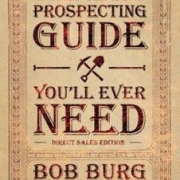Your First Job is to Communicate a Beautiful Idea
“Caught up in the difficulty of mystifying, magicians often forget that the first job of any artist is to communicate a beautiful idea,” is a quote from Raymond Joseph Teller in Joshua Jay’s book How Magicians Think. One idea that audiences find irresistibly beautiful is that they are being given access to “secret”, or at least little-known, information. That is precisely the tactic Penn & Teller used in demonstrating the age-old cups and balls trick, but using clear plastic cups, demonstrating that it is the magician’s skill rather than the props that create illusions.
“The idiom ‘inside scoop’ particularly refers to information that is only known to people who are among a select group”, grammarist.com explains. In the book Craved, author Kel Hammond notes that people love behind-the-scenes video footage, which makes people feel like they’re in the know. Showing people a more personal side of who is behind the brand is a powerful marketing tool. In other words, it’s the idea of being empowered with “inside info”, rather than the information itself, the accomplishes the marketing goal.
Researchers at the University of Bath, working with Nielson, came up with two ways to score ads.
- Information Power Score – measures what the consumer perceives as the value of the message
- Emotive Power Score – measures if the emotion is going to change feelings about the brand
At Say It For You, our business is blog marketing, which means connecting professional practitioners and business owners with prospective clients and customers. And, while I continually preach and teach that blog posts are not ads, but more like advertorials, establishing connections is the name of the game for both advertisers and content marketers. The first job of content marketing is, in fact, to communicate ideas that online visitors will find “beautiful”, making them feel as if they are part of a well-informed “inside group”.
Sometimes, the “beauty” of the blog content is that it simplifies and unifies diverse details into central concepts.. Other times the “beauty” lies in linking “conversation-piece” tidbits of information to concepts that help readers better understand complex processes. Caught up in the difficulty of online marketing, let’s remember that the first job of any blog content writer is communicating beautiful ideas.






Follow us online!